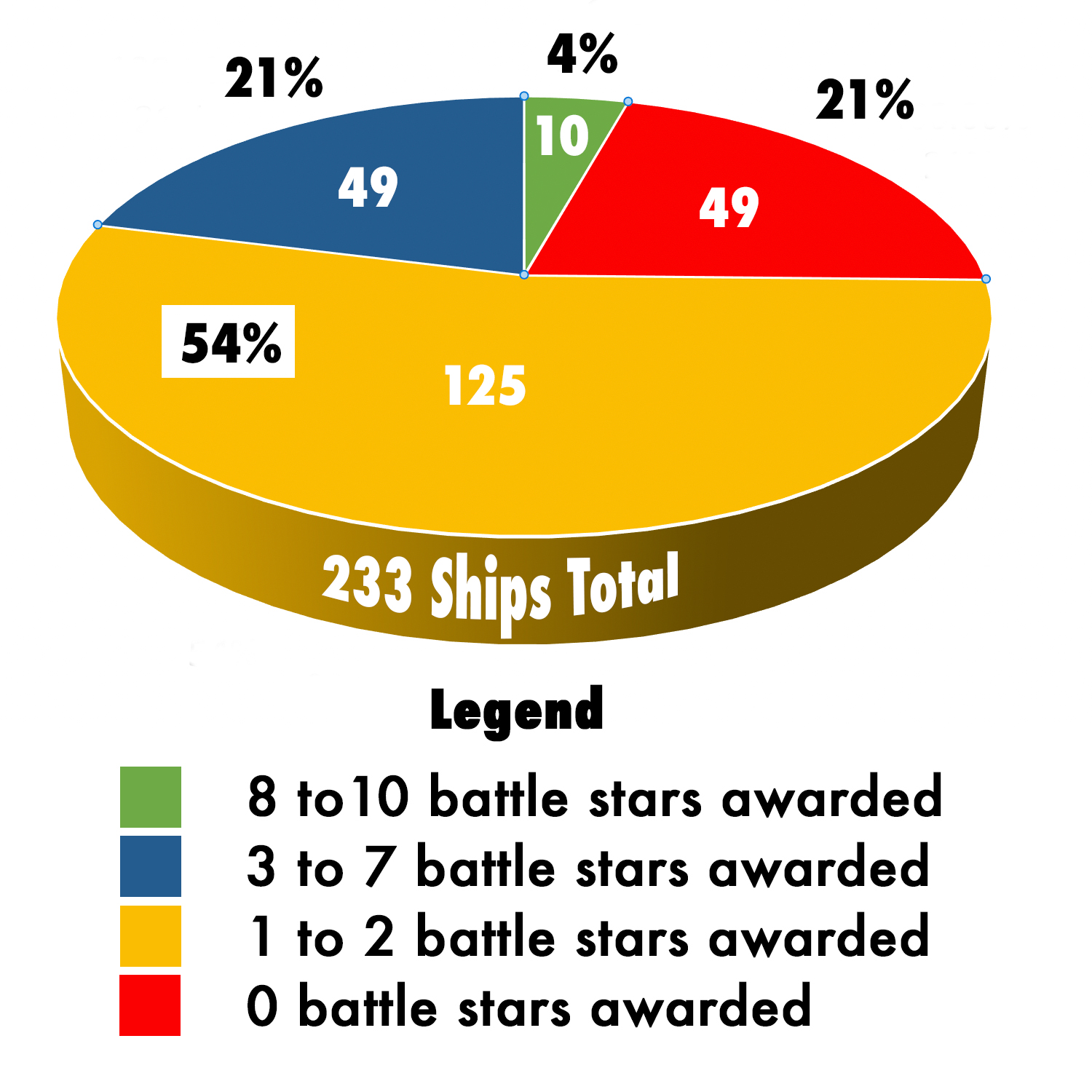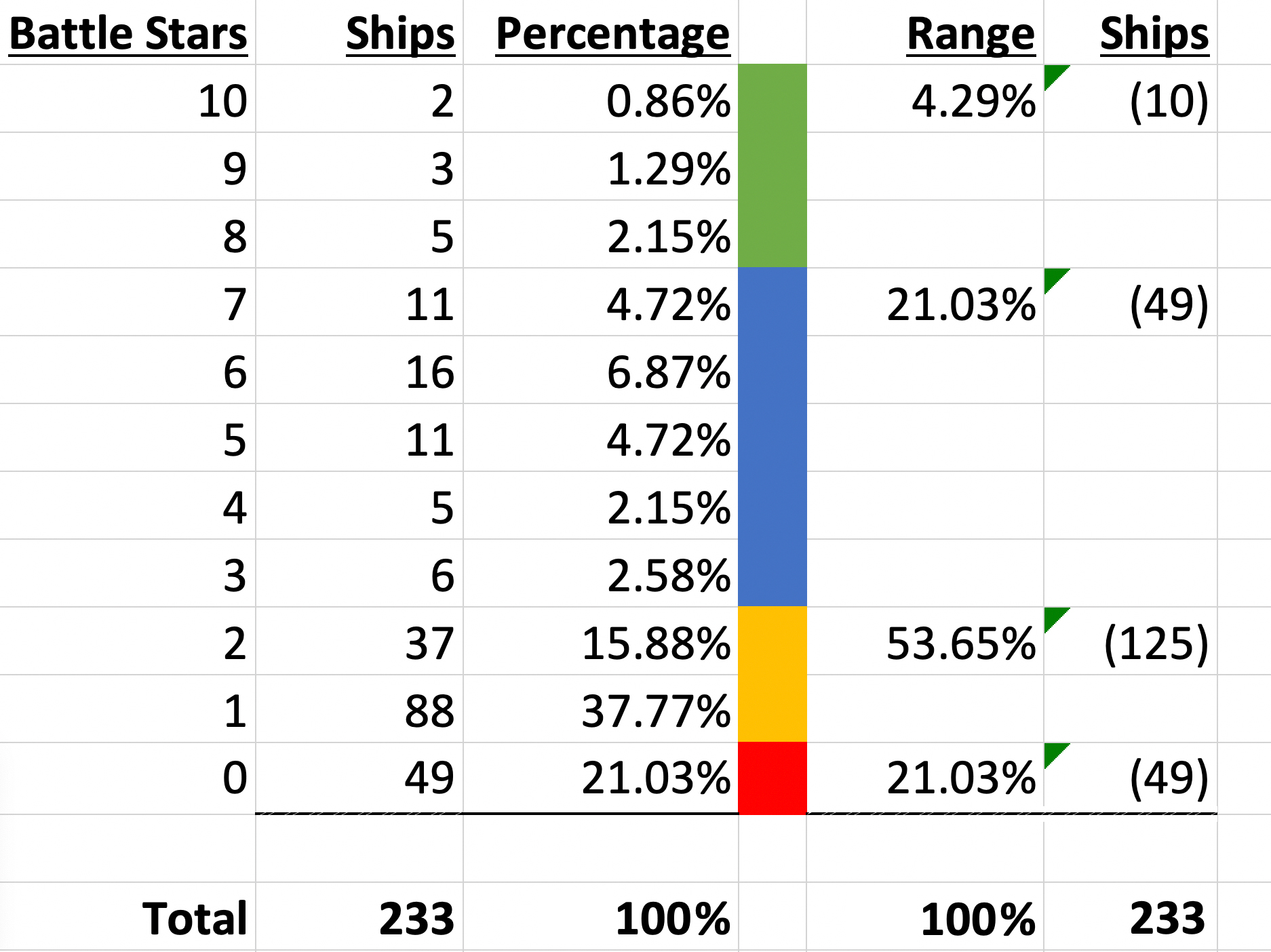

Battle Stars
Keeping Score

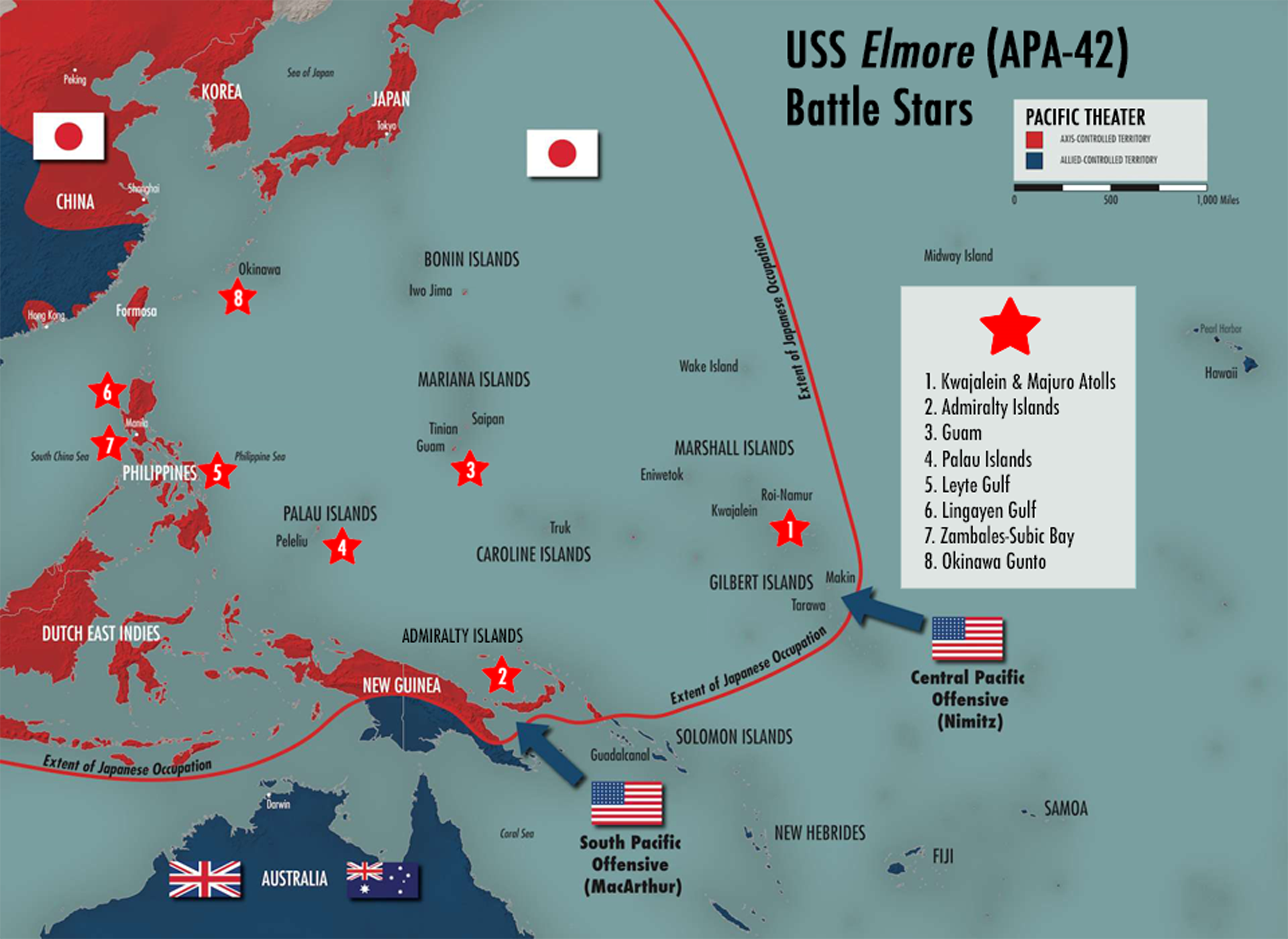
USS Elmore earned eight battle stars during World War II

Marshall Islands Operation
Capture and occupation of Kwajalein and Majuro Atolls, 31 January to 8 February 1944. Elmore sailed from San Diego 13 January 1944 and landed troops and equipment in the initial assault on the Marshalls 31 January 1944. In early February, she reported to the 3d Fleet at Funafuti, Ellice Islands.

Bismarck Archipelago Operation
Admiralty Islands landings, 11 to 12 April 1944. After training in the Solomons, she took part in the landings on Emirau Island 11 April, and carried troops between Guadalcanal and New Guinea until 3 June. On the 4th she got underway for invasion of the Marianas. The attack on Guam was intended originally to start only days after the landings on Saipan, but it was postponed to the next month.

Marianas Operation
Capture and occupation of Guam, 21 to 25 July 1944. Elmore landed troops in the assault on Guam 21 July 1944 and remained to embark casualties whom she carried to Eniwetok.

Western Caroline Islands Operation
Capture and occupation of southern Palau Islands, 6 September to 14 October 1944. After the invasion of Guam, Elmore returned to the Solomons for training, then saw action in the first wave against the Palaus on 15 September, landing Marines at Peleliu Island.

Leyte Operation
Leyte landings, 13 to 21 October and 19 November 1944. Elmore staged at Hollandia for the coming Philippine invasion and sailed 13 October for the Leyte assault a week later. Landing troops and cargo under heavy fire, Elmore lost one killed and five wounded on 20 October 1944 and directly supporting Gen. Douglas MacArthur in his landing at Palo ("Red") Beach.

Luzon Operation
Lingayen Gulf landings, 11 to 14 January 1945. Returning to Manus and New Guinean ports, Elmore prepared for the northern Luzon assault. On 9 January 1945 she was in Lingayen Gulf for the initial landings. Elmore remained to support the fighters ashore, and on 29 January landed troops without opposition near San Felipe.

Manila Bay-Bicol Operations
Subic Bay, Zambales Province, 29 to 31 January 1945. Elmore returned to Leyte in February to be mother ship for the boat pool and to direct unloading of merchant ships.

Okinawa Gunto Operation
Assault and occupation of Okinawa Gunto, 1 to 5 April 1945. Elmore sailed from Leyte 27 March 1945 for the invasion of Okinawa on 1 April. Four days after the assault she carried casualties to Guam, continuing to Seattle for overhaul. She was on her way back when the war ended and upon arrival at Leyte 30 August was assigned to redeploy troops throughout the Philippines.
Keeping Score: Battle Stars Earned During WWII
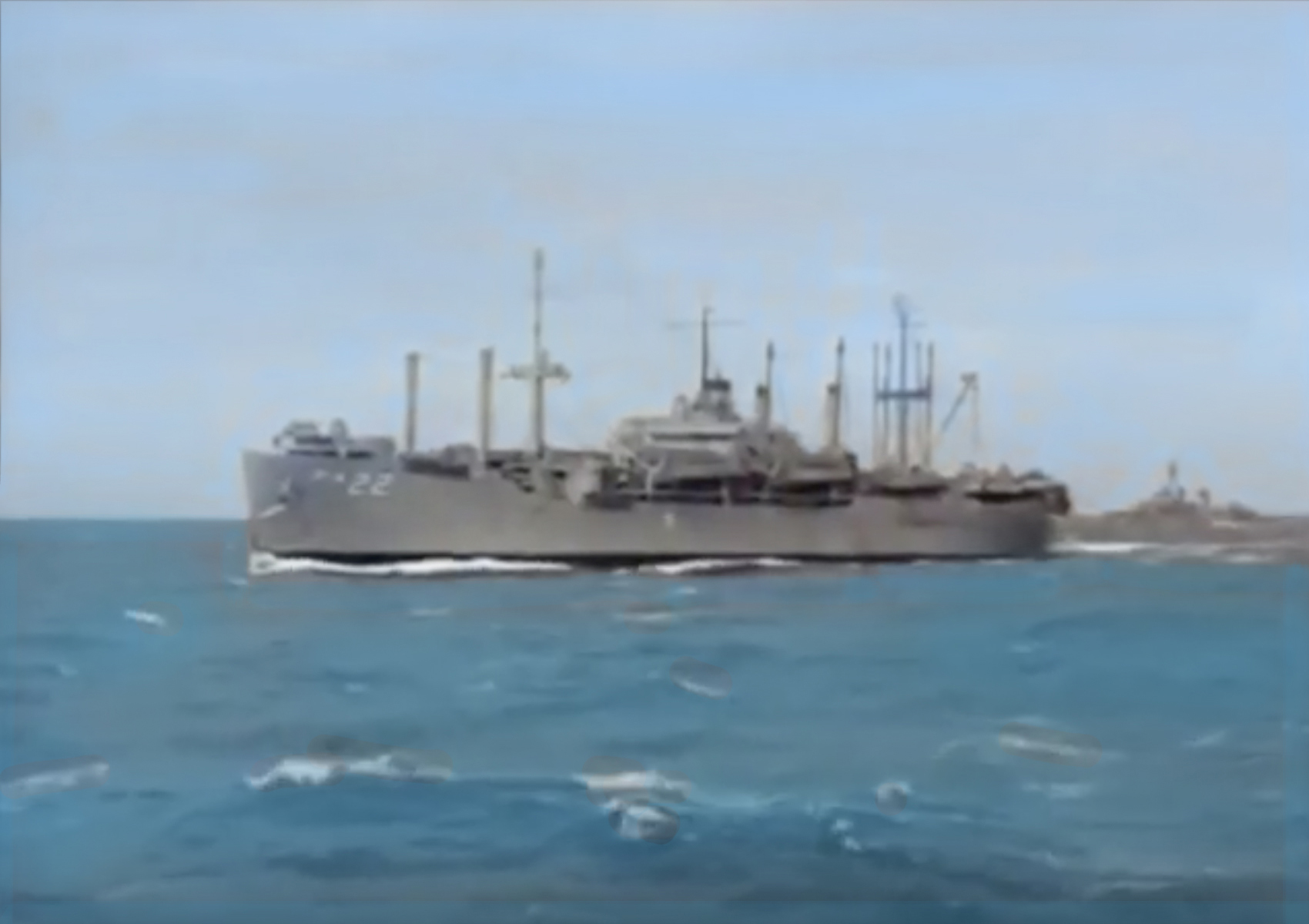
The Historical Record
USS Elmore (APA-42) earned eight battle stars during WWII in the Pacific theater. That put Elmore in the top 4% of all 233 attack transports in commission during the war. This includes all attack transports in both the Atlantic and Pacific theatres.
Only five APAs earned more battle stars. Ten stars was the maximum number earned during the war and two ships earned ten stars – USS Harris (APA-2) and USS Crescent City (APA-21). Three ships earned nine stars – USS Fuller (APA-7) and two of "the presidents" – USS President Jackson (APA-18) and USS President Adams (APA-19).
USS Elmore tied at eight with four of her sister ships, USS Zelin (APA-3); USS Leonard Wood (APA-12); USS Calvert (APA-32); and USS Pierce (APA-50).
Like USS Elmore, two of these ships, USS Calvert (APA-32); and USS Pierce (APA-50) were Bayfield-class ships.
A total of 34 Bayfield-class vessels were produced between 1942 and 1944, making the Bayfield-class the second most numerous attack transport class behind the Haskell-class. It is noted that the Haskell-class, numbered 117 ships, and were produced after the Bayfields. The Haskells were in force at the end of the war, mainly at Iwo Jima and Okinawa, but none achieved more than three battle stars.
The crew of USS Elmore (APA-42) had every right to be proud of their ship, with a level of achievement forever enshrined in the historical record.
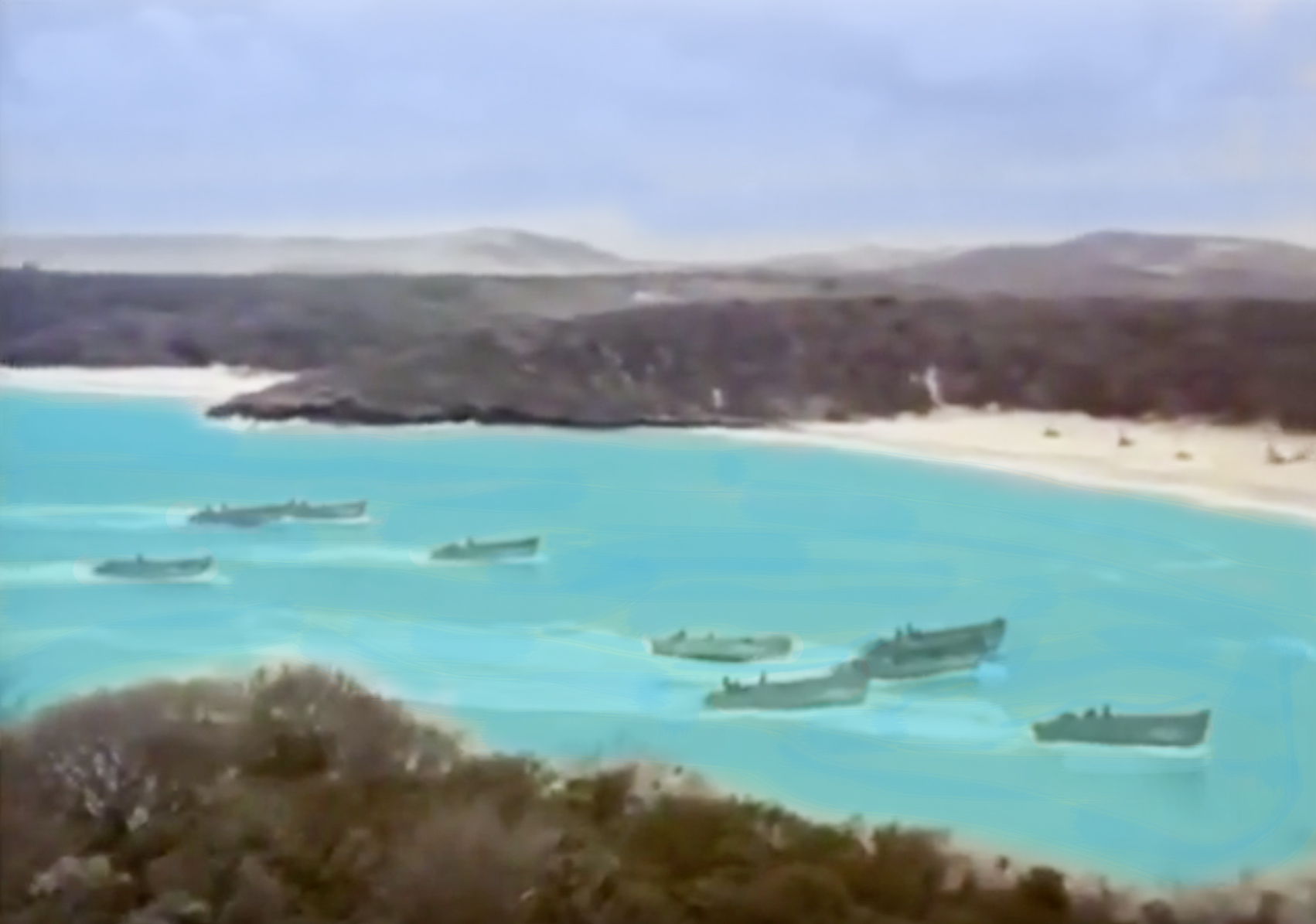
Comparison Overview
The accompanying pie chart greatly helps to visualize the distribution of battle stars among the attack transports (APAs). There was a total of 233 attack transports in commission during WWII. A number of these ships were produced too late in the war to earn any battle stars. The highest number of battle stars earned was ten. For the sake of simplicity, the number of battle stars earned have been grouped into four ranges.
• 49 ships (21%) earned zero battle stars during WWII.
• 125 ships (54%) earned between 1 and 2 battle stars.
• 49 ships (21%) earned between 3 and 7 battle stars.
• 10 ships (4%) earned between 8 and 10 battle stars.
USS Elmore (APA-42), with eight battle stars, was in the top 4% of all 233 attack transports in battle stars earned during WWII.

The Details
At first glance, the data table looks a bit daunting. But just spend a minute looking it over and it becomes readily understandable. This is the data source for the pie chart that can be seen in the Comparison Overview section. The details in the table are straightforward, as you will see.
- The first row contains the number of battle stars from zero at the bottom to ten at the top.
- The second row shows the number of ships that earned a give number of battle stars.
- The third row shows the percentage of ships that earned a give number of battle stars. This is based on 233 total ships.
- The four-color bar represents four different ranges. GREEN represents between 8 and 10 stars. BLUE represents between 3 and 7 stars. ORANGE represents between 1 and 2 stars. RED represents zero stars.
- The fifth row shows the percentage of each range (based on 233 total ships).
- The sixth row shows the number of ships in each range out of 233 total ships.
This is probably the first time since the end of the war (then done under US Navy review) that such a comparison chart has been produced.

